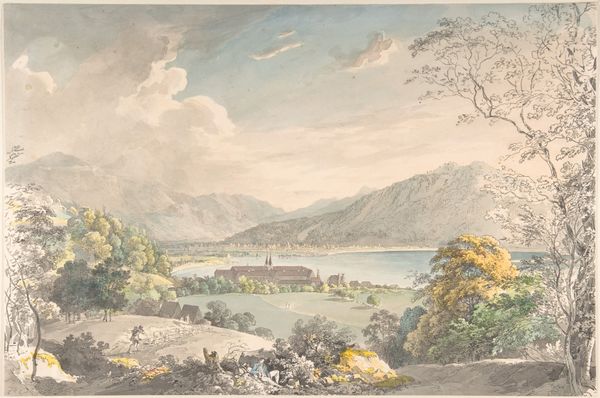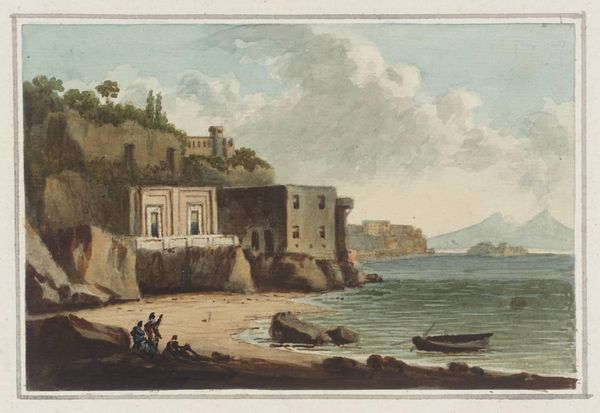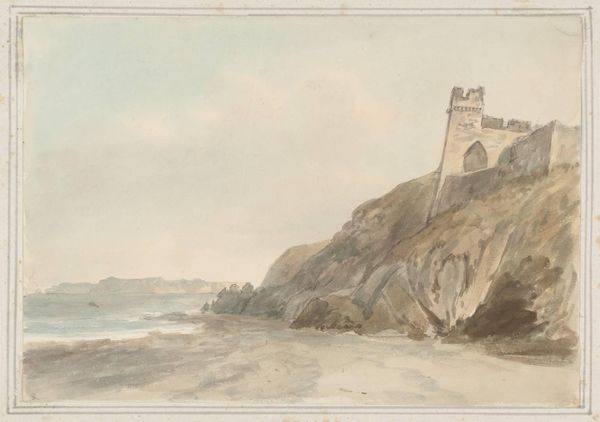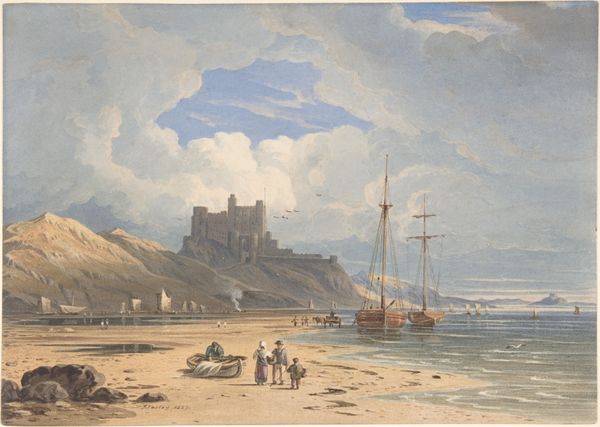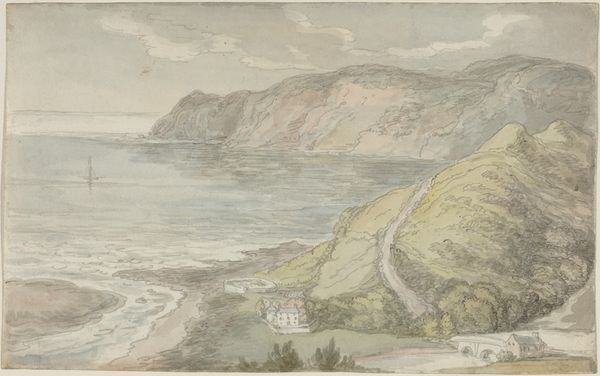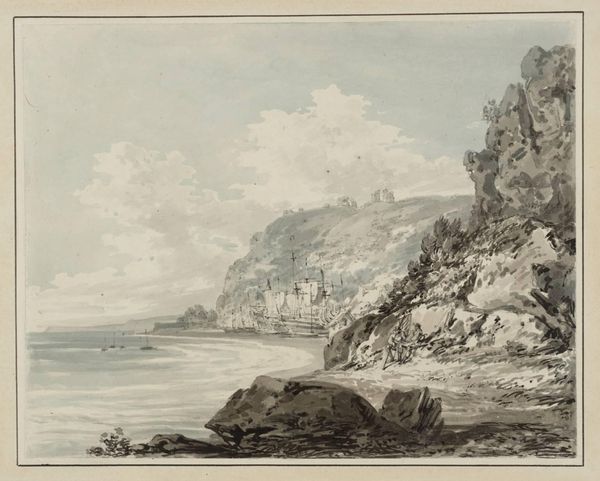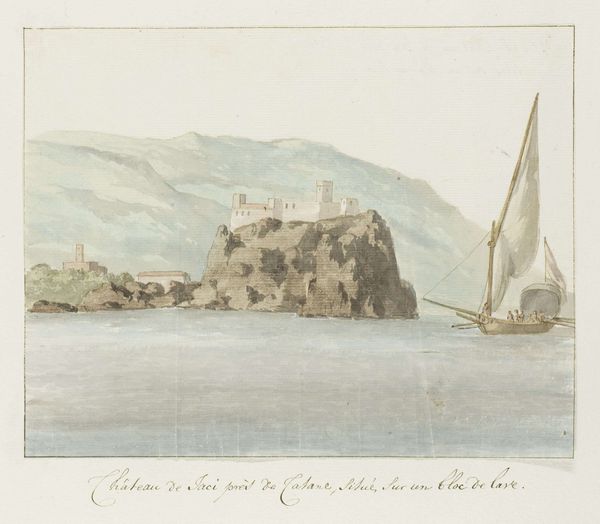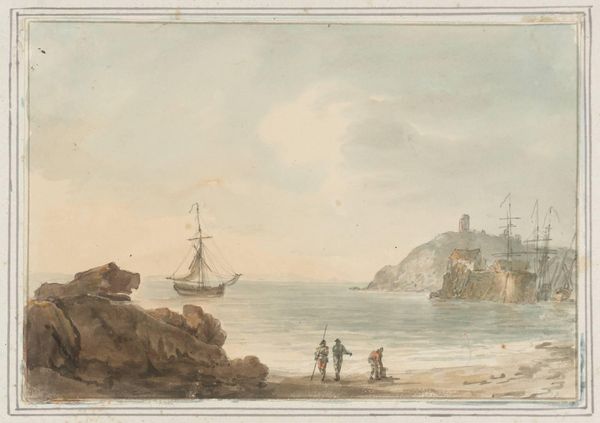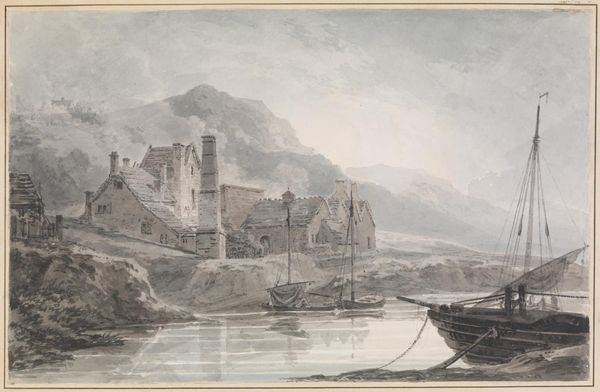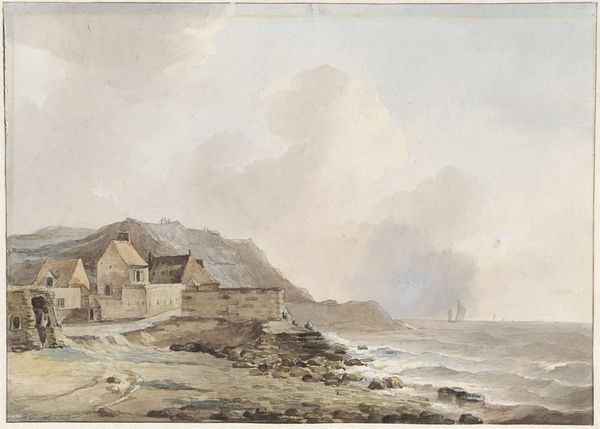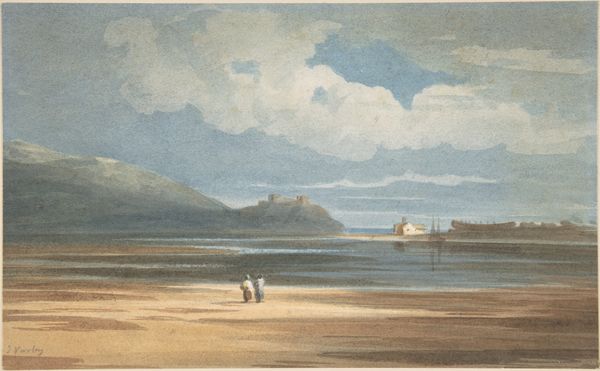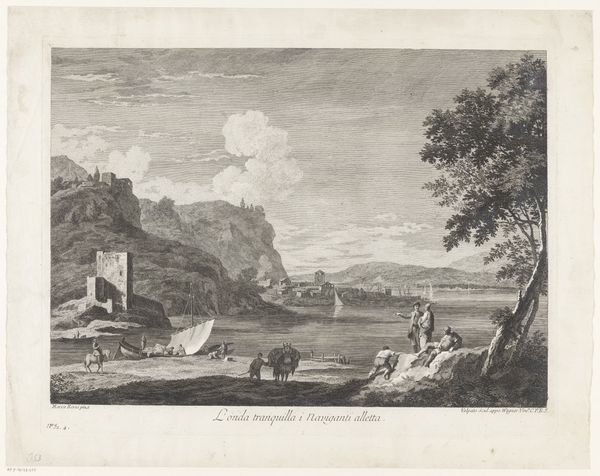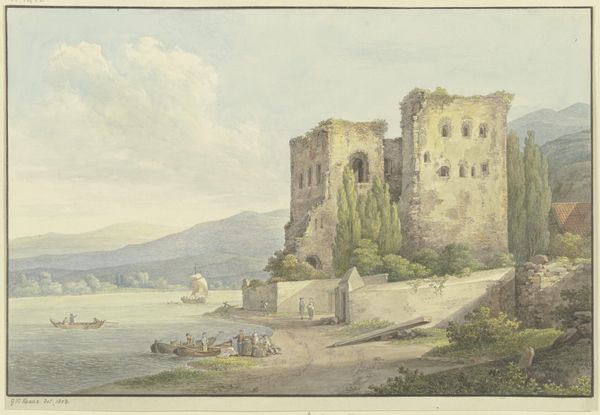
drawing, plein-air, watercolor
#
landscape illustration sketch
#
drawing
#
plein-air
#
landscape
#
watercolor
#
romanticism
#
cityscape
#
watercolour illustration
#
watercolor
#
realism
Dimensions: sheet: 17.62 × 25.4 cm (6 15/16 × 10 in.)
Copyright: National Gallery of Art: CC0 1.0
Curator: This watercolour, created circa 1850 by William Brenton Boggs, offers a view of Fort St. Iago in Madeira. Boggs' plein-air sketch invites us to consider not only the fort but its relationship to the surrounding landscape. Editor: It strikes me as instantly nostalgic, like a half-remembered dream of a vacation. The muted tones and the hazy light give it that feeling, and the texture from the rough paper is visible through the thin washes of watercolour. It’s quite affecting. Curator: Watercolour became an especially popular medium for landscape painting in the 19th century, partly due to its portability for outdoor sketching, linking back to romantic ideals. It let artists capture atmospheric conditions directly from nature, an ideal exemplified here in Boggs’ romantic realism. Editor: I can almost smell the salt in the air. He has a way of portraying light hitting the architecture that makes it almost… tactile. You feel you could reach out and touch the rough stones of that fortress. It invites reflection, really. What has that Fort witnessed? What has it protected, or not? Curator: Indeed, the location itself has its own complex history, originally a defensive structure, and then likely transitioned to a strategic colonial outpost. Works like this offered a way for European audiences to imagine far-flung territories. What is often omitted from the art history narrative is to investigate how this affected social consciousness. Editor: Right, these aren’t neutral landscapes; they come laden with context and implicit power dynamics. I see the beauty, of course, but recognizing the undercurrent of those narratives is what enriches my experience, too. Curator: Absolutely. It reflects how art simultaneously embodies aesthetic beauty, yet acts as a cultural artefact laden with history. Examining the colonial gaze here forces us to ask important questions. Editor: I find myself thinking about what aspects of his own world an artist decides to represent or leave out. That decision, however subtle, makes an artwork uniquely their own. Thank you. Curator: My pleasure. A historical view coupled with a direct visual approach reminds us of our shared humanity, regardless of geography or circumstance.
Comments
No comments
Be the first to comment and join the conversation on the ultimate creative platform.
